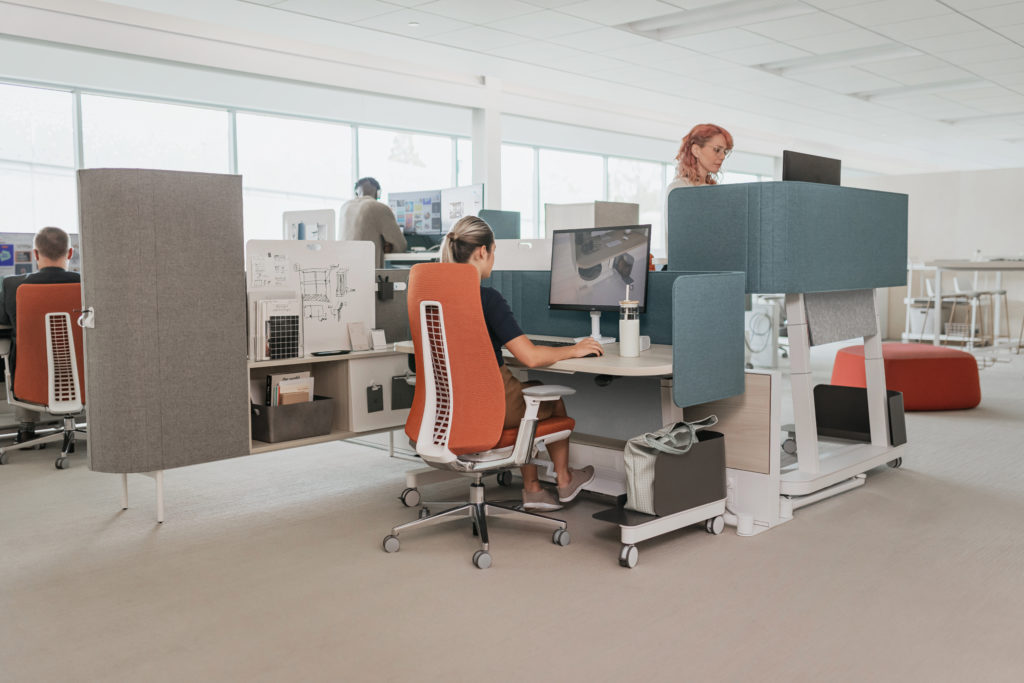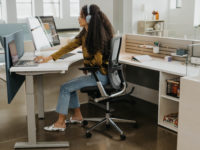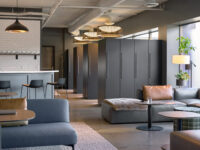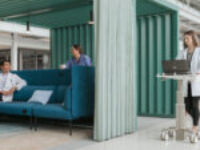The ebbs and flows of workplace needs can vary depending on the goals of that particular space. Traditional trains of thought would claim that as long as there’s four walls and a desk with the right electrical hookup, the employee is set up for success.
But we know that is no longer the case – and hasn’t been for a while now. Creating an environment that is adaptive in nature plays a huge role in the overall success of businesses worldwide. The number of brands who have shifted from 100% in-office schedules to hybrid or even total remote work schedules is growing by the day. New norms utilize time spent in the office to collaborate, connect, and ideate with one another. Employees are using remote work hours to complete focus work, allowing them to make the most out of in-office time.
This begs the question, “How can businesses create a space that evolves with the new needs surfacing on a daily basis?”
It all comes down to a simple answer: workplace flexibility.
In this article, we break down the basics of how corporations can continue to provide a supportive environment for employees in a way that feels natural and simple to adapt.
What Does Designing For Workplace Flexibility Mean?
Designing for workplace flexibility is designing a space that can meet all the creative and technical needs of employees. With all of the cultural changes happening in the workforce today it is important that employees have a workplace that reflects those changes. This means that the original office model of a series of individual work stations will no longer meet the needs of company employees. It is essential that companies design a workplace that not only allows individuals to get their work done, but the space should also be able to house meetings, invoke creative thinking, and inspire employees; all while being comfortable and relaxing.
There’s much to gain from adopting this dynamic. Let’s jump into it:

What Are The Benefits Of Designing For User Flexibility?
Employee Engagement Skyrockets
A flexible workplace keeps employees engaged and maintains a positive attitude. Standard cubicles can make people feel alone and uninspired, but a space with an open concept allows employees to collaborate creatively as needed. In our experience, we’ve seen the best results when businesses choose to have soundproof rooms or spaces designed for noise control. This gives people the option to knock out focus work in a quiet area without closing themselves off entirely from their teammates in a traditional office.
Talent Attraction (And Retention) Becomes Easier Than Ever
Having a coffee maker and free coffee in the breakroom is no longer enough to keep top talent happy with their workspace. In order to keep up with competitors, employers must offer good benefits and a positive workplace culture. Your talent will not only feel comfortable – but look forward to coming to work and hanging out with their coworkers. Remember that people want to work for companies that share their own core values, so if one of your benefits includes a floating desk or working remotely a few days a week you’ll attract talent that seeks that flexibility in their career.
In addition to a flexible schedule, having the space for employees to take a mental reset in a freshly renovated employee lounge with soft furniture and flooring is a huge win in the eyes of today’s workforce. Sometimes working alone in an office for 8 hours a day, 5 days a week can make work feel heavy which makes it hard for employees to remain positive and bond with one another. Having a space that easily allows coworkers to connect and mingle will improve the overall culture of the workplace. Coworkers will connect on more topics than just work. Instead of only speaking at staff meetings or when they pass each other in the break room, they will build a bond that improves everyone’s attitude about coming into the workplace.
Design Ideas That Make The Workplace More Flexible
Businesses can take advantage of products – such as Haworth Echo – to maximize the amount of flexibility employees have in their designated work stations or areas. There are an endless amount of ways that company leaders can make their workplace flexible:
- Individual work rooms with carpeted flooring to dampen sound
- Conference rooms with HD Digital monitors
- A fully stocked cafe
- A creative area with laminate floors, brightly colored walls, or wheeled furniture
- Chairs and tables that include embedded power sources
Find Inspiration To Transform Your Own Commercial Space
King Business Interiors specializes in designing a workspace that is flexible enough to support all of your employees’ needs. Our experts are on standby to provide you with unparalleled industry insights unique to your niche and company goals. Contact us today to schedule an on-site consultation!



